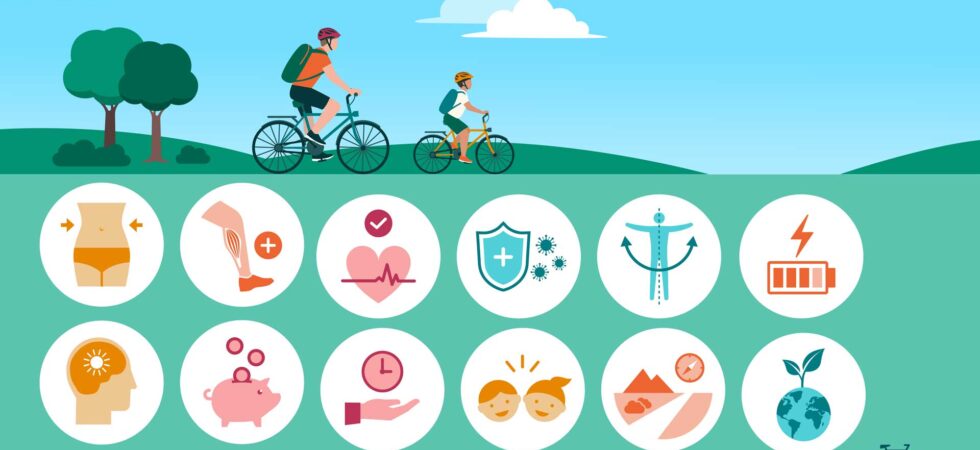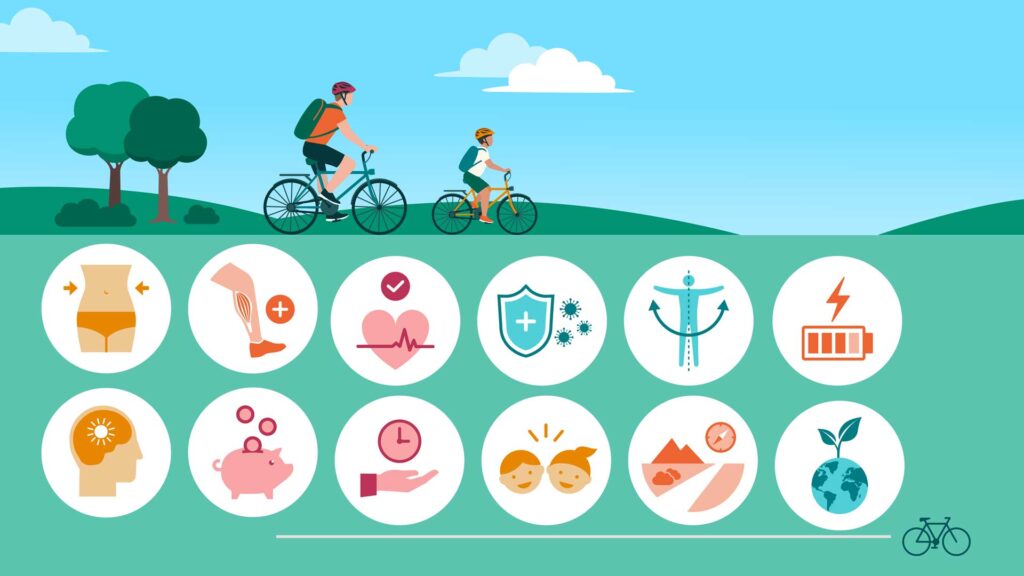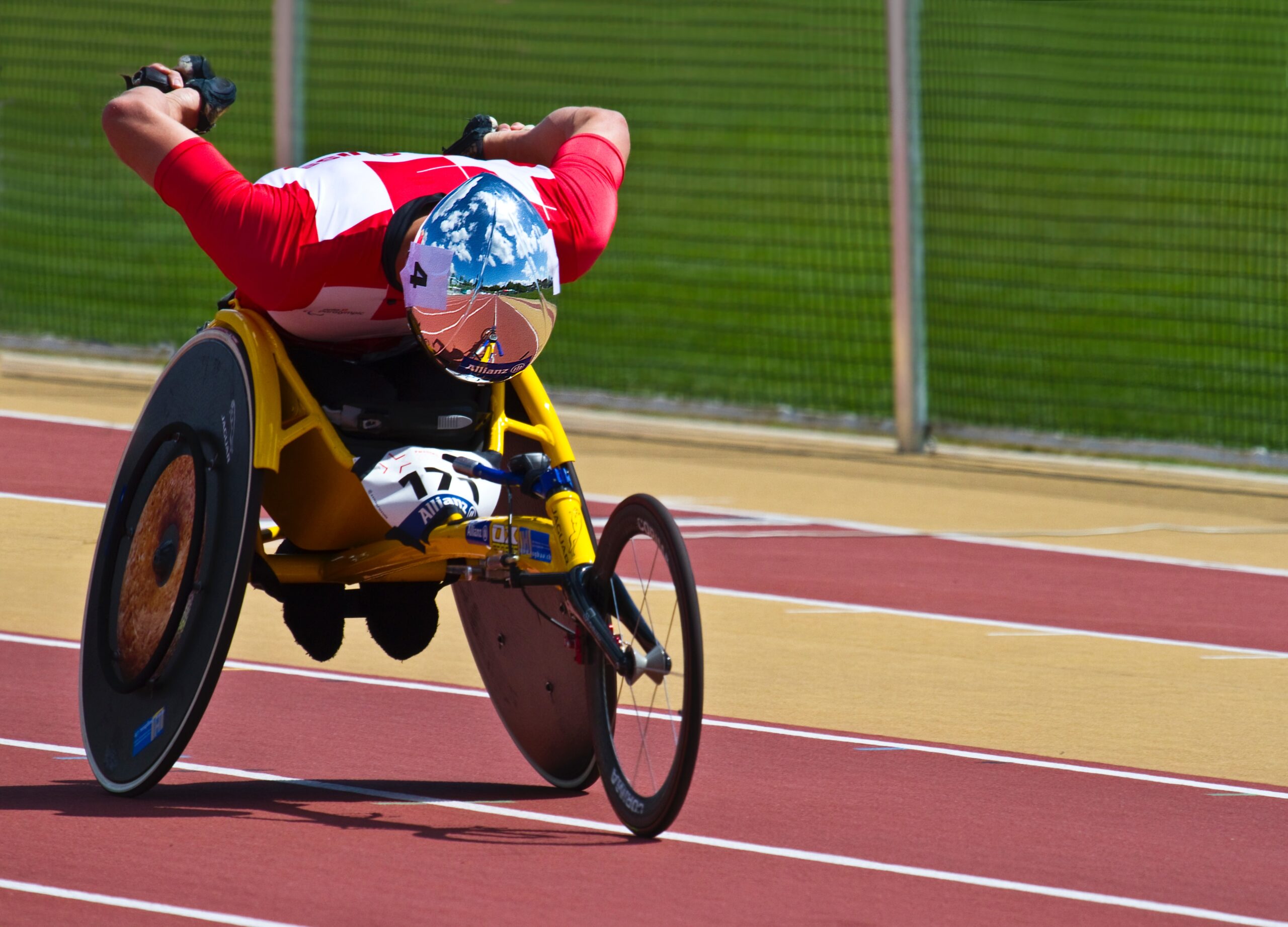The health benefits of cycling


Cycling is one of the easiest and most effective ways to stay healthy and fit. Whether you commute every day, go for a ride in the evening or enjoy longer tours at the weekend – cycling strengthens your body and revitalises your mind. And the best thing is: almost anyone can do it! But why is cycling so healthy and what makes it one of the best sports for all ages?
Cycling: Cardio, muscle and fat burning
Physical benefits: Your cardiovascular system benefits
Regular cycling is an excellent cardiovascular workout. Your heart beats more efficiently, your blood circulation is improved and your blood pressure can be lowered. Studies show that people who cycle regularly can significantly reduce their risk of cardiovascular disease. It’s ideal for people of all ages and fitness levels. Studies show that cycling
- decreases high blood pressure,
- improves cholesterol levels and
- can reduces the risk of cardiovascular disease by up to 50%.
Building muscle and burning fat
Cycling not only trains your legs, but also your entire body.
- Legs and calves: The main players in every pedal stroke.
- Glutes: Provide stability and power on climbs.
- Core muscles: A strong core helps you to maintain good posture and prevent back pain.
With every pedal stroke, you strengthen your leg and gluteal muscles and burn calories in the process. Cycling is particularly ideal for people who want to lose a few kilos.
Tip: Combine regular cycling tours with a healthy diet to achieve lasting results.
Cycling helps to improve mental health
Cycling is not only good for the body, but also for the soul. Exercising in nature reduces stress, improves sleep and lifts the mood.
How this works:
- Steady movements have a calming effect on the nervous system.
- Cycling increases the production of endorphins, the happiness hormones.
- Spending time in the fresh air clears your head.
Tip for everyday life: Use your bike as a ‘mobile oasis of relaxation.’ S
Tips for beginners: How to get off to a healthy start
Even though most people can ride a bike, regular and healthy cycling requires a little planning.
1. Choose the right bike
Whether city bike, trekking bike or e-bike – your bike should be suitable for your intended use. Seek advice from a specialist dealer and make sure you choose the right frame size.
2. Start slowly
If you haven’t been on a bike for a long time, start with short, flat routes.
- Week 1: 15 minutes per day
- Week 2: 20-30 minutes
- Week 3: Try out gentle ascents
3. Think about the right equipment
- Bike helmet: safety first!
- Comfortable clothing: specially padded trousers prevent pressure points.
- Bottle: always stay hydrated.
4. Stay motivated
Set yourself small goals, e.g. a weekend tour or achieving a new distance record. Use apps such as Komoot or Strava to track your progress.
Cycling in everyday life: stay fit

Cycling can be easily integrated into your everyday life:
- Commute to work or school.
- Use your bike to go shopping.
- Plan a family outing at the weekend.
Burn calories in everyday life:
| Activity | Duration | Burned calories |
|---|---|---|
| Ride to work (5 km) | 15 Min. | 150 kcal |
| Shopping by bike | 30 Min. | 300 kcal |
| Weekend tour (20 km) | 1 Std. | 600 kcal |
Tip: Every movement counts! Even short distances make a difference.
Healthy cycling: Strengthen your back and relieve pain
How does cycling affect your back?
Back pain is a widespread disease – it is often caused by a lack of exercise, poor posture or weak muscles. Cycling can provide targeted help here because it:
- Trains the back muscles: your back works while you pedal. The deep stabilisers along the spine are particularly stressed, which supports the spine.
- Stimulates blood circulation: The rhythmic movements stimulate blood flow to the intervertebral discs. They soak up nutrients like a sponge, which helps them regenerate.
- Relieves pressure on the spine: In contrast to sports such as jogging, cycling does not place any impact on the back. Instead, the movements remain smooth and gentle.
- Improved posture: Regular cycling can correct poor posture and reduce tension.
Tips for back-friendly cycling
The right posture is crucial to ensure that cycling strengthens your back and does not strain it:
- Ergonomic sitting position:
- Keep your back slightly tilted forwards, but not overstretched.
- The handlebars should be adjusted so that you can relax your shoulders.
- Suitable bike:
- A trekking bike or city bike with an upright riding position is particularly easy on the back.
- For sportier riders, a road bike with optimally adjusted handlebars ensures a healthy posture.
Tip: Pay attention to the correct seating position. An ergonomic position on the bike prevents back strain
Prevent back pain with cycling
Cycling can not only alleviate existing complaints, but also have a preventative effect:
- Strengthening the deep muscles: By cycling regularly, you strengthen the muscles that support your spine.
- Balancing out one-sided strain: Especially for people with sedentary jobs, cycling loosens up tense muscles and compensates for postural problems.
- Stress reduction: A lot of back pain is caused by stress. Cycling reduces stress and relaxes the muscles.
Additional tips for a healthy back while cycling
- Ride dynamically: Vary your pedalling speed and incorporate short breaks to avoid one-sided strain.
- Stretching exercises before and after cycling:
- Cat hump: Mobilises the spine.
- Forward bends: Stretches the lower back.
- Ride regularly: Just 3-4 short sessions a week can strengthen your back muscles in the long term.
1. How healthy is cycling for your back?
Cycling strengthens the back muscles, especially the deep muscles along the spine that provide stability. It promotes blood flow to the intervertebral discs, which supports their regeneration and helps to relieve tension. With the correct sitting position – leaning slightly forwards and with relaxed shoulders – cycling has a preventative effect against back pain.
2. Is cycling healthy for the knee?
Yes, cycling is particularly gentle on the knees as it moves the joints without impact. The even movement ensures that the joint cartilage is optimally supplied with nutrients, which prevents signs of wear in the long term. It is important that the saddle is correctly adjusted to avoid incorrect loading.
3. How often is cycling healthy?
For health benefits, it is sufficient to cycle 3-4 times a week for 30 to 60 minutes. If you cycle every day, you should make sure that the intensity varies to avoid overloading. Even short distances in everyday life, such as the journey to work, make a positive contribution to health.
4. Is cycling healthy for the prostate?
Yes, moderate cycling can improve blood circulation in the pelvic area, which is good for the prostate. A good bicycle saddle that minimises pressure on the pelvic floor is important. Special ergonomic saddles relieve pressure on this area and prevent problems.
5. Which muscles are strengthened by cycling?
Cycling mainly trains:
- Leg muscles: Thighs, calves and buttocks.
- Core muscles: abdominal and back muscles stabilise the upper body.
- Arms and shoulders: The upper body muscles are also used, especially on climbs or mountain biking.
6. Is cycling every day healthy?
Yes, daily cycling is healthy as long as the intensity and duration are adapted to your fitness level. Easy everyday routes can be ridden every day without any problems. For intensive training, it is advisable to take rest days to prevent overloading.
7. Is cycling healthy for the spine?
Yes, cycling supports the health of the spine, as the postural muscles are strengthened and the intervertebral discs are better cared for through the even movement. It is important to choose an ergonomic sitting position to avoid poor posture.
8. Is cycling healthy for osteoarthritis?
Yes, cycling is one of the best sports for osteoarthritis. It promotes joint mobility, is gentle on the joints due to the even load and can reduce pain. Moderate intensity and avoiding high resistance are crucial.
9. How healthy is an hour of cycling?
An hour of cycling improves your cardiovascular health, boosts your metabolism and strengthens your muscles. Depending on the intensity, you burn between 400 and 600 calories. It is an effective and joint-friendly way to stay physically active.
10. Does cycling strengthen the immune system?
Yes, regular cycling strengthens the immune system as it stimulates the production of defence cells and improves blood circulation. Moderate exercise in nature helps to reduce the risk of infections and illnesses.


















Recent Comments